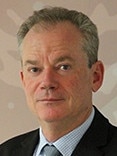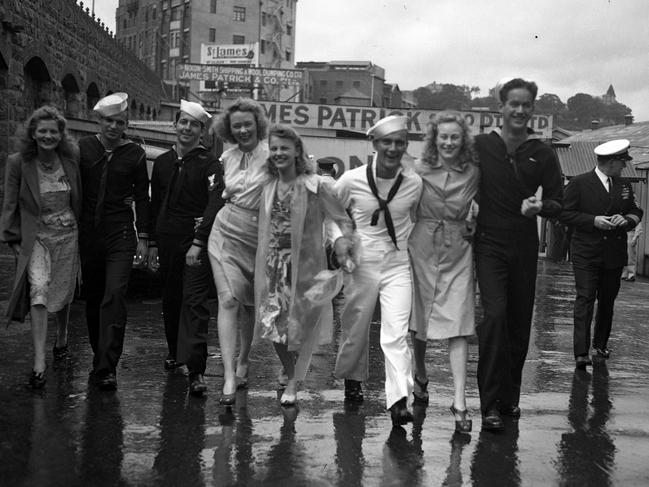Defence experts stay Brisbane a ‘logical’ pick for Australia’s only east coast nuclear submarine base
Defence experts say Brisbane already has a leg up over one of the other frontrunners for a new submarine base, but the project may face a frosty reception from the community for one reason.
QLD News
Don't miss out on the headlines from QLD News. Followed categories will be added to My News.
Brisbane would be a “logical” pick for Australia’s only east coast nuclear submarine base, with the city already having a leg up over another of the frontrunners according to Defence experts.
But they warned the community would be frosty to the conversation due to the perception of nuclear – this despite Brisbane being the main port of call on the east coast for visiting nuclear-powered warships.
The federal government this week announced Brisbane – along with Port Kembla and Newcastle – was being considered as the east coast base for Australia’s future nuclear submarine fleet.
And Brisbane also has a leg up against Newcastle, whose port has been leased for 98 years to a consortium that includes a Chinese-owned company.

Australian Strategic Policy Institute senior analyst Marcus Hellyer said the Port of Newcastle’s lease to the consortium including the China Merchants Group was not a “showstopper”.
He said there were still many variables to work through but if the site was picked, the government could exercise its powers and take back the lease of the port.
“I think the United States would be very hesitant to allow us to have a nuclear submarine base next to a Chinese-owned facility,” Dr Hellyer said.
Griffith University Professor of foreign and defence policy expert Andrew O’Neill heralded Brisbane as the “logical” pick for a submarine base – declaring it would likely be on the front line in responding to a more powerful and aggressive China.
“Brisbane’s an attractive destination for people to come and live and work, we have a lot of technical capability … geographically we are plugged into the Pacific,” he said.
“Brisbane provides a really logical geographic location for that.”

Dr Hellyer also cited Brisbane’s population base as an advantage, but asserted he didn’t believe any of the three sites were clear frontrunners at this stage.
Both experts said while most people wouldn’t bat an eye if the base was for diesel submarines, nuclear-powered craft created a political hot potato.
“Once you throw nuclear reactors into the mix, disposal of nuclear waste – once you throw in the far-fetched chance of an incident – a reactor meltdown in home port – some politicians are going to be very cautious in investing in this,” he said.
Brisbane is already the main port of call for visiting nuclear-powered warships on the east coast, regularly hosting the USS Ronald Reagan.
BRISBANE’S RICH SUBMARINE HISTORY
A push for submarines to lurk in the murky water of the Brisbane River would be another chapter in the city’s rich defence history.
Eighty years ago next month the first US navy submarine glided up the river to dock at New Farm, starting what would soon become the US navy submarine operations and maintenance base – its biggest in the southern hemisphere.

It was the first of eleven S-Class submarines to arrive at New Farm, which along with Fremantle was selected as launch pads to strike back at Japanese forces which had won major victories in the South Pacific campaign.
The Royal Australia navy notes Brisbane was a “highly suitable” location with established port facilities and a dry dock – where 89 submarines would arrive for repairs between April 15, 1942 and the end of World War II in September 1945. Out of the range of Japanese planes, it offered a relatively safe port for the US fleet.
For three years submarines and warships dotted the Brisbane River while sandbags and taped-up windows featured throughout the city – whose residents were prepared for war.

An Australian invasion by the Axis powers would have seen North Queensland captured quickly, making Brisbane the first line of national defence. At the mouth of the river defences were built, the remnants which can still be seen today at Fort Lytton National Park.

Brisbane was the gateway to the Pacific Theatre. A nine-storey sandstone building on Edward St headquartered General Douglas MacArthur, Supreme Commander of the Allied Powers. It is estimated about a million US military personnel passed through Brisbane on their way to war in the pacific.
By the end of the war patrols under Brisbane’s submarine command resulted in 117 enemy ships – including three heavy and two light Japanese cruisers – being sunk. Seven of the Brisbane-based submarines were lost.
A Submariners Heritage Trail now stretches through Teneriffe and New Farm in honour of Brisbane’s maritime past.
More Coverage
Originally published as Defence experts stay Brisbane a ‘logical’ pick for Australia’s only east coast nuclear submarine base




